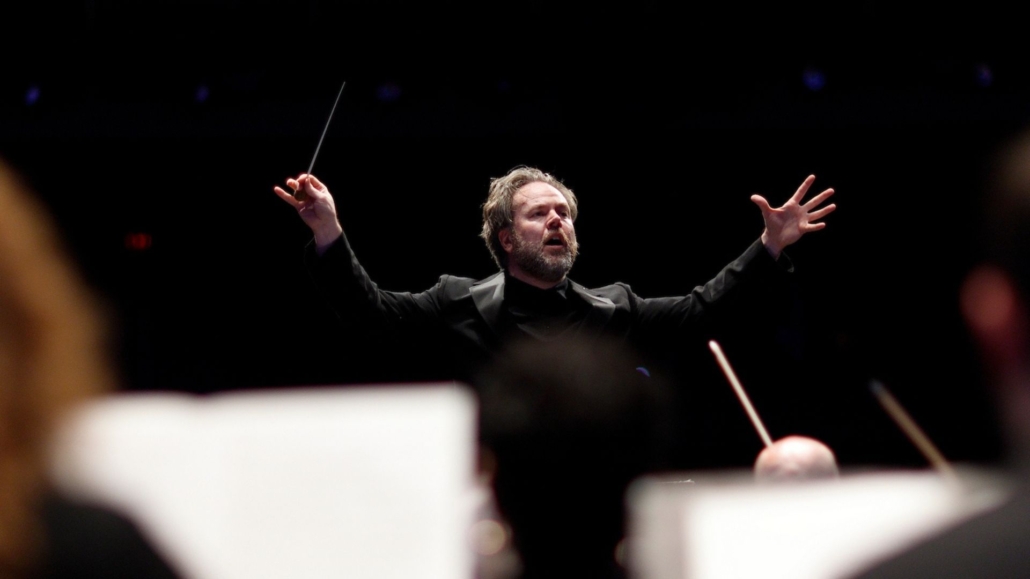“Haydn,” says the American conductor Kenneth Woods, “is a journey that never ends.” To begin with, there’s the sheer volume of work that Franz Joseph produced over the course of his long life: 106 symphonies, at least 20 operas, 70 string quartets, and no fewer that 127 trios featuring the baryton, a cello-like instrument that is now functionally extinct. And then there’s the question of influence: not only did Haydn impart his compositional wisdom directly to both Wolfgang Amadeus Mozart and Ludwig van Beethoven, he is still a source of joy and inspiration to composers today. Unlikely though it might seem, even pioneering minimalist Philip Glass has turned to Haydn’s keyboard music to inspire his own, as he told this writer in conversation some years ago.
Unfortunately I can’t remember exactly what Glass said, although I’m sure the recording of our chat is around here somewhere. In any case, this is perhaps appropriate when considering the Austrian great’s Symphony No. 60 in C major. As its more colloquial title, “Il Distratto”, indicates, its subject is absent-mindedness, and in fact the work began life as incidental music for Jean François Regnard’s play Le distrait, about a comically befuddled young nobleman, Léandre, who is so scattered that he even forgets his own wedding day.
There is no evidence, however, that Haydn himself was suffering from any loss of mental acuity when he wrote the Symphony No. 60. Far from it: its six movements are constantly in flux, but its twists and changes of mood are impeccably timed. As Victoria Symphony music director Christian Kluxen says, “It’s music that refuses to settle. The whole piece feels like it’s flipping through costume changes. You’re in one world and suddenly pulled into another, with no warning, no apology. There’s even a famously silly moment where the orchestra ‘forgets’ to tune. And yet it’s all constructed with absolute precision; Haydn in a nutshell. That’s what makes it brilliant: it’s sophisticated music pretending to be disorganized.”
“For the layman, it might be easiest to simply summarize this is a seriously crazy piece of music,” says Woods. in a 2017 essay. “Léandre’s daydreaming and bumbling creates all sorts of opportunities for interesting musical moments. In the first movement, we hear the orchestra grinding repeatedly to a halt as the protagonist loses his train of thought completely before awakening with a start. Midway through, the orchestra starts playing music from a completely different Haydn symphony (a quote from “The Farewell”). In the second movement, the rehearsal for the wedding procession breaks down when the elegant music of the procession is repeatedly disrupted by a passing marching band, and while the wedding rehearsal attempts to restore order, Leandre finds himself drinking with friends to a quote from an ancient French folksong: ‘In the Pub, I find wisdom and advice.’”
There are five more movements to go, and Haydn will keep you on the edge of your seat for all of them.
Joining Haydn’s romp in this program is another repurposed piece of theatre music, and a third that was not explicitly intended to accompany drama, but that has plenty of its own. Le bourgeois gentilhomme began as a companion piece to Richard Strauss’s one-act opera Ariadne auf Naxos; the latter’s librettist, Hugo von Hofmannsthal, envisioned an updating of Molière’s 1670 play. Today, the dramatic version of Le bourgeois gentilhomme is rarely performed, but the orchestral suite that Strauss derived from it is clearly one of his mid-career masterpieces.
“I’ve wanted to programme this ever since I first conducted Ariadne auf Naxos,” says Kluxen. “The music is full of charm and elegance, but it’s elegance pushed just far enough to become ridiculous. Everything is a little bit too much, like a character trying too hard to impress. Strauss channels Molière’s satire perfectly. You feel the characters not through words, but through the way the music carries itself. It has poise, but it also knows when to trip over its own shoes.”
The Austrian composer Heinz Karl Gruber’s Manhattan Broadcasts will serve as an effective overture and eye-opener, while offering a 20th-century parallel to Haydn’s Classical chaos. “It’s theatrical in a totally different language: urban, jumpy, ironic,” Kluxen explains. “You get flashes of cabaret, radio, and dance-hall music, all stitched together with a kind of nervous energy. It’s not pastiche, though—it’s more like a surreal stage show that keeps changing channels. You don’t quite know what’s real and what’s performance, and that’s exactly the point. It’s as confusing as the plot in Mozart’s Figaro, but in a modern sense. You leave feeling almost dizzy from all the things that happen.
“For me, the real link between these three works is that they all engage with performance itself,” the conductor continues. “They present music not as a statement, but as a kind of role-play. You hear characters, moods, contradictions. Sometimes it’s over-the-top, sometimes it’s intimate, sometimes it feels like it’s making fun of itself. But, always, it’s alive in the moment. The music itself takes an ironic distance to its deeper meaning, or maybe to the whole concept that music should have a deeper message.
“That’s what excites me about this concert,” he adds. “It’s not about looking for deep philosophical meaning; it’s about the joy of music as theatre. Music that entertains, provokes, interrupts, and surprises. Music that doesn’t just want to be played—it wants to play.”
Notes by Alex Varty



 Christian Kluxen, conductor
Christian Kluxen, conductor